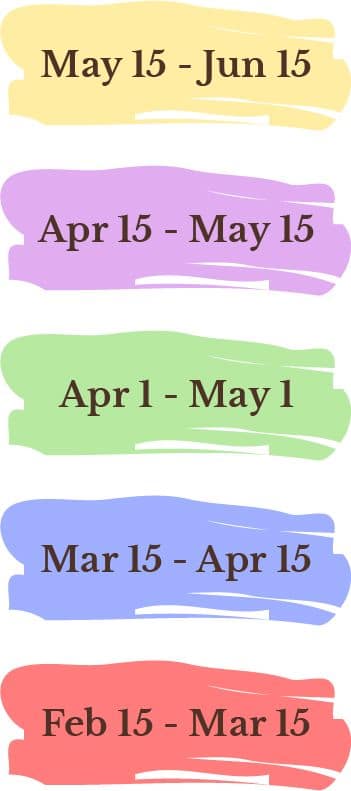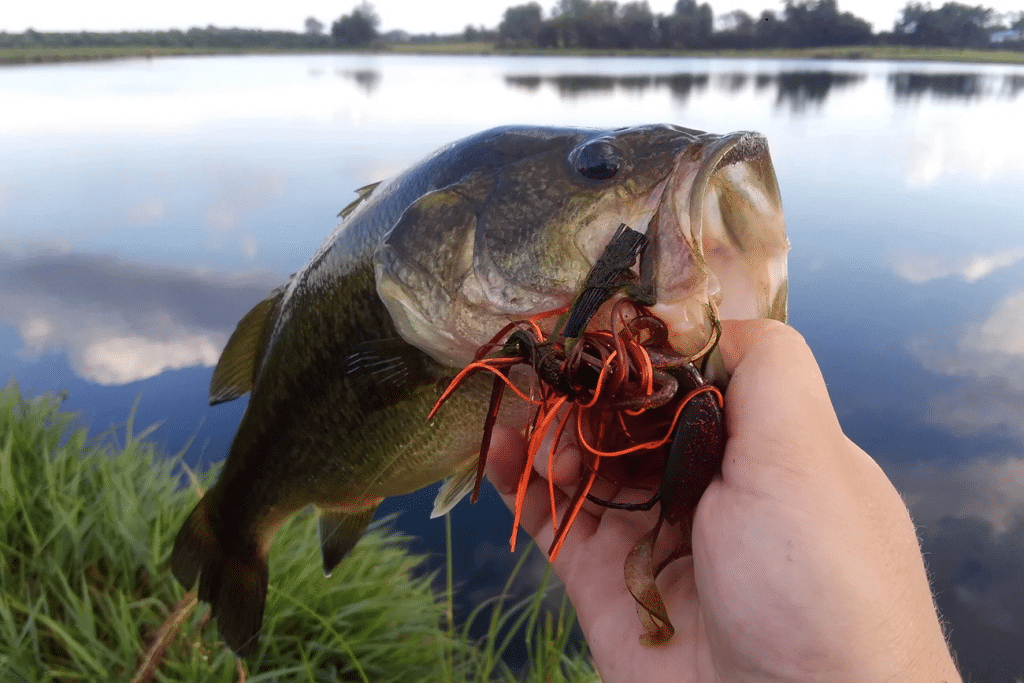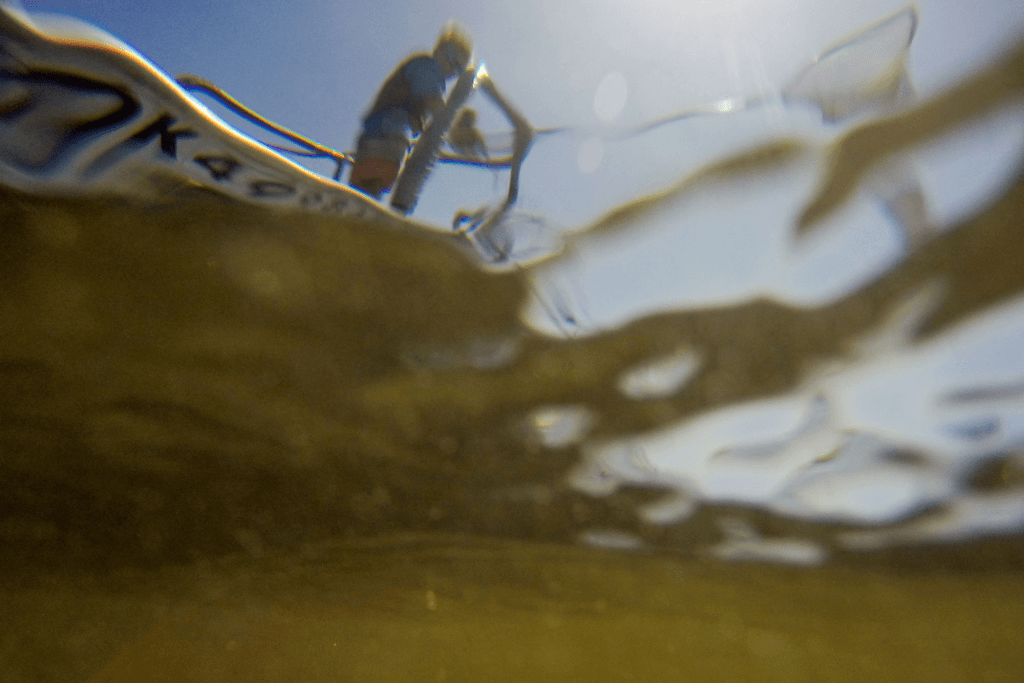Most bass anglers across the country will admit that the spring time spawning period is their absolute favorite time of the year for getting out on the lake and catching big bass.
While most anglers retreat to shallow water during the spawn, what happens when it’s over?
Well, much of the same.
Most male and female bass will remain shallow post spawn either guarding the eggs or feeding on a heavily trafficked travel path that you can capitalize on with the right soft plastics.
I’ve combed through every inch of my brain to put this guide together.
All this information is based on decades of personal and professional experience studying fish habits.
We’ll explore all that post spawn bass fishing has to offer avid anglers.
Understanding Post Spawn Bass Patterns
Once the water temperatures across the country reach around 62 to 65 degrees Fahrenheit, every bass angler knows to start fishing the shallowest water they can to find big spring bass.
But what happens once the spawn is over?
Male and Female Bass Parental Care During the Post Spawn Period
Once the spawning ritual has occurred and the female has chosen a male and laid up to potentially 10,000 eggs, the female’s maternal contribution is over. It’s now time for the male bass to become a superdad.


Bass are high-fecundity spawners, which is a big fancy word for saying “bass lay a lot of eggs.” In nature, most animals that have many offspring will have very low parental care. The more babies you can have, the less time you need to worry about taking care of them through maturity.
The male guards the eggs in the nest from predators like bluegill and others for around a week until they hatch into tiny fry, which can take up to two weeks. Afterwards, the male continues to protect the fry for up to two more weeks.
However, once the fry have matured and left “superdad” behind to swim to greener pastures, all parental care efforts are complete and the little guys are all on their own.
Typically, around 70 percent of bass fry survive from a spawning season due to predation and water conditions.
Why Bass Stay Shallow During the Post Spawn Period
The act of spawning itself takes a lot of energy out the male and female bass. Keep in mind, big females carry about 10,000 eggs for a few months and also endure a tiring spawning act with the male. Since the female contributes nothing to parental care, her main job once spawning is over is to recover, and then feed.
The male, on the other hand, has to remain shallow with the eggs and fry until they are mature enough to swim off on their own. Once that has occurred, it’s time to feed for “superdad” as well.
Both male and female bass will typically remain shallow for the first couple of weeks after the spawn to take advantage of optimal water temperatures and feeding opportunities. In your lake this food probably involves bream like bluegill, which generally conduct their spawning just after the bass.
However, another shallow-water food opportunity for the bass occurs when shad spawn on rocks and shallow water cover during early-morning frenzies once the water temperatures have consistently reached 70 degrees Fahrenheit.
Once water temperatures reach around 80 degrees Fahrenheit, the bass begin to venture to cooler deeper water where dissolved oxygen is more plentiful. This signals to anglers that the “post spawn period” for the bass is complete, and it’s time to start figuring out how to locate and catch “summertime” bass in sometimes deep water.
Best Post Spawn Bass Lures

There are nearly endless lure options for attacking post spawn bass, and it is absolutely the time of year to enjoy fishing both new baits you may be trying for the first time, or old stand-by favorites that have been proven winners for years. Fishing for bass is simple when you have the best lures for the job.
Soft Plastics
Probably the most diverse group of lures for bass anglers would be soft plastic baits. Worms, minnows, craws, frogs and swimbaits of the soft plastic variety can all be effective this time of year. Let’s break down these baits, their rigging options ,and productive techniques associated with them.
Straight Worms
Small soft plastic worms, like the Zoom Finesse Worm, rigged texas style with 1/16 to 1/8 ounce bullet weights on 1/0 to 2/0 offset shank hooks perform well fished around shoreline targets like fallen trees or boat docks.
Longer floating worms, like the Zoom Trick Worm, in bold colors like black, white, merthiolate, or bubblegum should be fished weightless on a 3/0 or 4/0 extra-wide gap hook and used as a topwater or subsurface presentation around any shoreline cover in clear to stained water.
Thicker stick-worm style baits like the Gary Yamamoto Senko in natural colors like green and brown fished on a wacky-rig presentation utilizing a 1/0 to 2/0 mosquito hook inserted into the center of the worm skipped under docks or cast around isolated vegetation clumps
Minnow-Style baits
Larger minnow-style baits like the Zoom Super Fluke in natural baitfish colors work great when fished weightless on a 4/0 to 5/0 extra-wide gap hook. Twitch them along the surface in the mornings and evenings around the shoreline or visible cover.
Smaller minnow-style baits such as the Berkley Powerbait 3” Minnow in white or smelt colors rigged weightless with a #2 mosquito hook through the nose of the bait can be twitched around shoreline cover, but also allowing the bait to fall slowly between twitches when a bright, sunny day occurs, especially when fishing a lake with very clear water. This is definitely a “safety net” technique that will get bites when nothing else works!
Craws
Low-action crawfish style baits such as the Zoom Big Critter Craw in natural brown and green colors excel on either a 1/4 ounce to 3/8 ounce finesse jig around rocks and wood cover in shallow water.
High-action crawfish style baits like the Strike King Rage Craw in green pumpkin color should be rigged texas style with a 1/4 ounce bullet weight and a 4/0 extra-wide gap hook. Pitch this bait around heavier cover near the shoreline like emergent grass, lilly pads, or fallen trees in more stained or muddy water.
Frogs/Toads
Buzzing-style frogs/toads such as the Zoom Horny Toad or Stanley Ribbit rigged weightless on a 3/0 to 4/0 extra-wide gap hook should be buzzed on the surface around the shoreline or any submergent vegetation early in the morning or late in the evening. This is a phenomenal topwater technique for covering water quickly.
Swimbaits
Paddle-tail swimbaits such as the Keitech Swing Impact Fat and Strike King Swimming Caffeine Shad work great rigged on belly-weighted extra-wide gap hooks in weights of 3/16 to 3/8 ounce and hooks sizes of 3/0 to 5/0 swam around riprap shorelines and around vegetation such as lily pads, especially on cloudy or windy days.
Buzzbaits and Spinnerbaits
Covering water quickly and effectively is important to managing your time on the lake during the post spawn period. Both buzzbaits and spinnerbaits achieve this goal while also providing a bigger target to the bass, and entice larger fish.
Buzzbaits in white and other baitfish colors can be fished in a variety of settings, but burned along riprap banks and alongside wood cover can be very effective during post spawn period fishing trips, especially early in the morning or late in the evening, or on cloudy days.
Spinnerbaits in baitfish or sunfish colors can basically be swam around any shallow water cover available, with the speed of the retrieve being key to attracting a larger fish. Generally speaking, if the water is clearer, fish the bait faster utilizing willow-leaf style blades for more flash and realism. Slow the bait down in stained water and switch to indiana or colorado style blades for more vibration.
Topwater Hard Baits
Post spawn bass fishing and topwater lures go hand in hand. This is primarily the reason that the post spawn is my absolute favorite time of the year for bass fishing. With a variety of hard baits to use on top, how do you choose which one is right for your situation?
Poppers/Chuggers
Poppers such as the Rebel Pop R can be cast around any visible cover and blooped back to the angler slowly, with a one or two second pause in between movements to entice larger fish. Let the water clarity dictate which color to choose, saving black, yellow, and orange for dirtier water, and casting white, chrome, or even clear-colored baits for clearer water.
Chuggers like the Storm Chug Bug or Lucky Craft Gunfish have slightly more versatility than your typical popping bait. With a cupped mouth like the popper, but a slightly more elongated body, the chuggers can not only be popped around cover, but also “walked” back and forth in a fleeing-baitfish retrieve.
Walking Baits
Lures such as the Heddon Super Spook Jr and Lucky Craft Sammy are phenomenal at catching clear water bass chasing bait fish like threadfin shad around the shoreline. Use a “walk the dog” retrieve to bring the bait back to you after the cast in a zigzag pattern, switching up the speed of retrieve until the bass let you know what they like.
Prop-baits
Propbaits or stickbaits such as the Lucky Craft Kelly J or the Smithwick Devil’s Horse are great lures to use when fish are not chasing baits too far away from their structures they are hiding in. Docks, fallen trees, and even riprap banks are great places to cast a prop.
Let the lure sit on the surface for one or two seconds after the cast, then retrieve with quick, short snaps of the rod tip back towards the boat, pausing again in between. Sunfish and threadfin shad colors are best here, with the prop bait excelling in clear to lightly stained water.
Plopper-style Baits
Loud, plopping baits like the River 2 Sea Whopper Plopper or the Berkley Choppo are fantastic for covering water with a noisy racket around the shoreline and drawing larger fish out of cover.
Fish these baits early or late in the day around any productive shoreline, casting as shallow as possible and retrieving the lure with a steady wind of and the rod tip down. Lure color should be based on water clarity with natural bait fish colors used in clear to stained water, and bolder colors such as black or bone utilized in slightly dirtier water.
Shallow crankbaits
To cover water effectively below the surface during your post spawn fishing trip, shallow-running crankbaits are a great tool to keep in mind. Riprap banks, stump fields, boat docks, and even shallow points are excellent areas to check with a shallow crankbait throughout your day.
Some options for this time of year are the Strike King KVD 1.5 squarebill crankbait and the Rapala DT6 crankbait. Again, colors depend on water clarity, with sunfish and shad patterns getting the most action typically. Retrieve speed can be adjusted faster or slower until you get a few strikes.
Hollow-Bodied Frogs
A favorite of bass anglers, and my personal favorite, for post spawn bass fishing is the hollow-bodied frog. Some favorites are the Spro Bronzeye Frog and the Booyah Pad Crasher. While some anglers believe these amphibian imitators can only be used around lily pads or emergent grass, they also excel around wood cover, or even docks when used early or late in the day.
Colors should imitate natural-colored frogs, sunfish or shad, depending on the dominant forage in your area. If you haven’t given hollow-bodied frogs a try during the post spawn period, take my word for it. It can be amazing.
Post Spawn Bass Fishing Tips: Pro Guide

Here, I’ll provide you with my best options for achieving success the next time you venture out on your own body of water during the post spawn period. To keep it simple, let’s narrow it down to my top 5 setups for post spawn bass.
Floating Worm
A floating 6” straight-tail worm rigged weightless on a 4/0 extra-wide gap hook. I’ll start with bubblegum, but will move to white or watermelon red if necessary. Twitching this bait around fallen trees, stumps and docks once the bass are done spawning will be my main focus. I typically throw my floating worm on a spinning rod to help with casting an un-weighted bait. 20 pound braided line with a 12 pound fluorocarbon leader gets the job done.
Topwater Plopper
I love a River 2 Sea Whopper Plopper 130 in baitfish colors. No brainer with this one, covering water in low-light conditions either early or late in the day, or a cloudy day with some breeze will bring strikes from aggressive bass, hunting for baitfish in the shallows. Throw it everywhere you can without hanging its two sets of treble hooks. Avoid grass or Lilly pads. I typically use 17 pound monofilament or 30 pound braid on a baitcasting setup when slinging a Plopper 130.
Prop Bait
My favorite is the Lucky Craft Kelly J prop bait in sunfish colors. Twitching this bait around shady banks later in the day once the sun gets high can be fantastic as this is where the small sunfish begin to rise to the top of the water column to feed on insects, especially overhanging tree limbs and docks. Slow your retrieve, and keep your twitches short and quick, like a sunfish snapping an insect off of the water’s surface. Again, treble hooks are present here so be careful where you cast. 12 pound monofilament is my go to line for this bait, and a 6’6” to 7’ spinning rod for easy casting of a lighter topwater bait.
Wacky Rig
A wacky-rigged Gary Yamamoto Senko in green pumpkin used weightless with a 1/0 mosquito hook directly through the center of the worm. Having the ability to control the rate of fall of my lure down through the water column can be crucial to getting a few more strikes. I love this technique around boat docks once the sun has gotten high and the bass have headed for the shade. 20 pound braid to a 12 pound fluorocarbon leader works for me on a 6’9” to 7’ medium to medium heavy spinning setup. Be patient with this bait during the cast, allow the worm to fall slowly all the way down to the bottom.
Weedless Sunfish/Frog
My secret weapon in recent years once spawning is complete is the Livetarget Hollow Body Sunfish in natural bluegill colors. It is realistic when twitched back and forth, mimicking an injured or dying sunfish. I fish this bait on 30 pound braided line, mainly due to the hookset needed to penetrate the bait’s larger gauge double hook into the bass’ mouth.
Final Thoughts
The spawning season is the most exciting to many bass fishermen because of the ability to have the biggest largemouth bass in the lake at their most vulnerable stage in their life cycle: shallow, protective, and predictive. However, don’t put your rods away in dismay once the bass aren’t focused on spawning areas. Get excited about excellent post spawn fishing in pretty much any water body across the country.
Use pre-spawn to prepare your gear and tactics. If you do your homework, keep an open mind about bait selection and bass hideout locations, and put the time in, you’ll discover that the post spawn time of year can be your most productive season to catch bass.
Further questions? Additional tips and tricks for the post spawn? Fish stories?
Leave a comment below and help your fellow anglers out this year!




